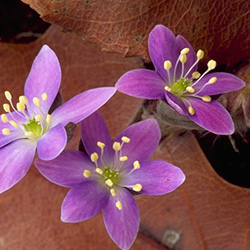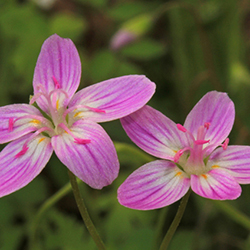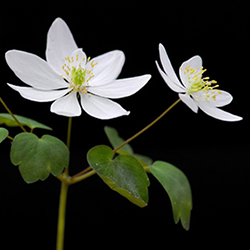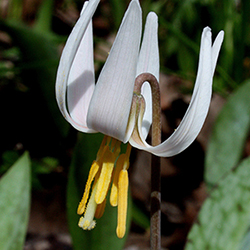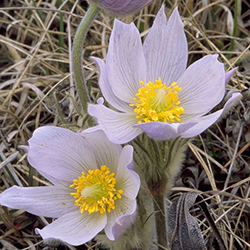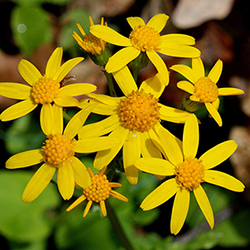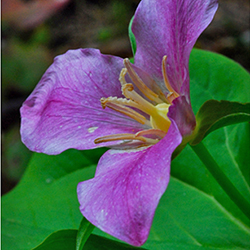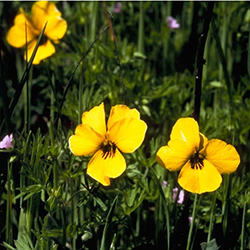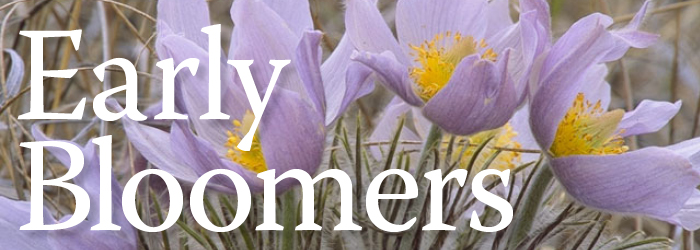
A WALK THROUGH THE WOODS this month could tell you if spring has hit where you live. Although your specific locale will dictate which plants you’ll encounter and when, some generalities can be made across regions — and species of some plant genera (such as Trillium) will be among the first plants to bloom regardless of location.
Anemone americana (Hepatica nobilis var. obtuse)
Hepatica is among those harbingers of spring known in the eastern half of North America as “spring ephemerals.” These plants typically emerge in hardwood forests after snowmelt or final frost and take advantage of sunlight allowed to reach the forest floor before the trees leaf out again. During this small window of time, spring ephemerals bloom, set seed and die back, according to urban ecologist Mariellé Anzelone of NYC Wildflower Week. The hepatica pictured here was spotted in McHenry, Illinois.
Virginia springbeauty (Claytonia virginica)
This plant seems deserving of its common name, spring beauty! Photographer Alan Cressler says South Carolina’s Stevens Creek Heritage Preserve has the most spectacular Virginia spring beauty population he’s ever seen. Gardeners who plant this should note that this ephemeral disappears from above ground shortly after the seed capsules have ripened but that it will not leave a large gap in the garden.
Rue anemone (Thalictrum thalictroides)
Rue anemone is one of the earliest to bloom in Eastern forests and is easily cultivated in wildflower gardens. This one has been called the longest-blooming plant of early spring – known to stick around well into June. It’s tiny and delicate, so tread carefully and look closely.
Troutlily (Erythronium albinum)
Plants in the Erythronium genus greet early spring wildflower seekers. White troutlily (Erythronium albinum)is native from southern Ontario westward to Texas. In Texas it blooms at the same time as redbuds (Cercis canadensis var. texensis) and wild plums (Prunus americana), as early as February.
Easter pasqueflower (Pulsatilla patens)
Pacific wake-robin (Trillium ovatum)
Pacific wake-robin wakes up the West as early as February. Photographer Terry Glase found this one in Sanders, Montana, blooming at nearly 3600 feet. It can be found on moist wooded slopes and stream banks up and down the West Coast as well as in Idaho, Montana, Wyoming and Colorado. Fellow trilliums such as white wake-robin in the East and this one get their common names because they are said to bloom in early spring about the time the robin arrives.
California golden violet (Viola pedunculata)
It may not be the best-known California wildflower (that’s the California poppy, of course), but this one surely is a sign that spring has sprung. Seen elsewhere but native only to California, California golden violet blooms as soon as February. Violets elsewhere can also be among the earliest to bloom in spring.
The Wildflower Center maintains lists of wildflowers you might find in your region during any season:

